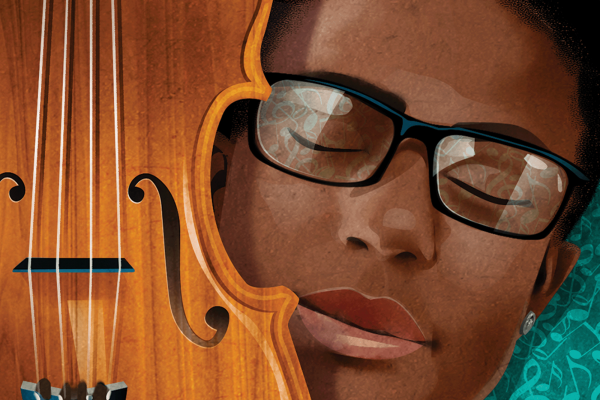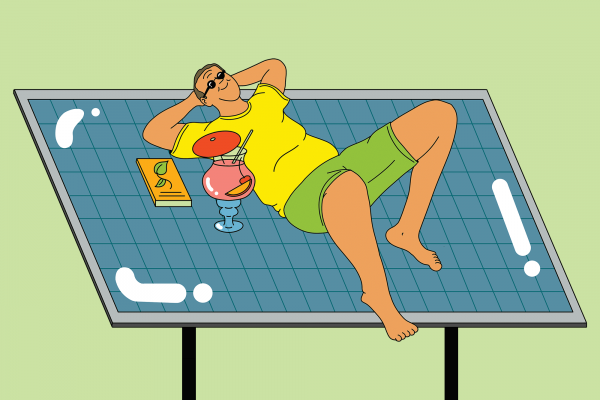More than 23 years after the blockbuster hit Chicken Run came out, Aardman Animations has finally released a sequel: Chicken Run: Dawn of the Nugget is a punny, thrilling, and slightly disturbing homage to the art of claymation, with abundant lessons about collective liberation, trauma, and parenting.
Dawn of the Nugget, now streaming on Netflix, features many iconic chickens from the original cast of Chicken Run, but the plot focuses on a new spring chicken named Molly (Bella Ramsey). Molly is the precocious and curious daughter of Rocky (Zachary Levi) and Ginger (Thandiwe Newton), the dynamic duo that helped free the chicken community from their chicken farm prison in the original film. The chickens are living in what can only be described as a chicken promised land, a safe island where the chickens can heal from their traumatic past and thrive.
But Molly, who doesn’t know about her community’s dark past, is curious about the outside world. Her parents are afraid to tell her the truth, believing that she is too young, and instead try to keep her on the island without explaining why. Despite her parents’ best efforts, Molly inevitably runs away, and, with the playground ease of a kindergartener, becomes fast friends with a chicken named Frizzle (Josie Sedgwick-Davies). Molly and Frizzle are lured into a high-security chicken nugget factory cleverly disguised as a chicken amusement park, “Where chickens find their happy endings.” So, to save Molly from certain nuggetization, Ginger and company are forced to return to the very situation they tried to escape from. As Ginger tells the other chickens, standing outside of the chicken nugget factory, “Last time we broke out of a chicken farm...well this time, we’re breaking in.”
More than anything, Dawn of the Nugget is a story of collective liberation. At the beginning of the movie, after Ginger discovers that there is a chicken factory being built on the mainland, she gathers her community together and delivers a passionate speech.
“We know from experience what that can mean,” Ginger says, referring to the construction of the new chicken farm. “It’s something we just can’t ignore. We really only have one choice. We’ve got to do something.” Thinking she’s going to initiate a rescue mission, the rest of the chickens are both visibly and audibly nervous, feathers flapping, beaks clucking. So, when she finally says, “We have to hide,” the rest of the chickens are relieved, breaking out into cheers.
“She’s right you know,” says one chicken, leaving the meeting. “It’s really not our problem.”
Ginger’s friend Mac (Lynn Ferguson) is surprised by Ginger, who she expected to launch a liberation campaign. “It’s not like you,” she says to Ginger.
“I know,” Ginger responds, “but I have Molly to think about now ... we can’t risk our freedom by venturing into a world that finds chickens so...delicious!” Ginger is willing to let hundreds of innocent chickens be turned into nuggets, just as long as her family is safe. It seems that chickens aren’t immune from the protect-your-own mentality.
Ginger’s impulse at the beginning of the movie is understandable, even for a former chicken liberator. Who doesn’t instinctively prioritize the safety of their loved ones, especially children, over the safety of others? But Ginger and company are forced into the belly of the beast to save Molly, and along the way, are forced to reckon with the reality of their inaction: By doing nothing, they are allowing other chickens to die.
Spoilers follow
After multiple near-death encounters, the ragtag group of chickens rescues Molly, but when they are just a quick zipline ride away from getting home safely, Molly hesitates, thinking about her friend Frizzle. Seeing that her daughter is heartbroken, Ginger decides that they are going back into the factory to liberate the others. The chickens put their own lives on the line to protect those more vulnerable than them, and at the end of the movie, they welcome the other chickens onto their island. The chickens have learned that no chicken is free until all chickens are free, and they commit themselves to locating other chicken-processing factories on the mainland to free the chickens trapped inside.
Chicken Run and Dawn of the Nugget are a bit like two siblings with a massive age gap: genetically very similar but raised in entirely different social contexts. Dawn of the Nugget has been shaped by the internet, rapid technological advancements, and a series of hardships no chicken could have ever seen coming, including 9/11 and the wars that followed, a recession, climate change, a deadly pandemic, and a global rise in nationalism. On top of all that, the warehouse containing most of the original Chicken Run puppets and molds burnt down, and then, once the puppets and set had been painstakingly recreated, the new warehouse flooded. Nobody would have blamed Aardman Animations if they hadn’t made a Chicken Run sequel. In a world full of CGI, AI, and advanced animation technology, why bother with stop-motion claymation? Why bother with Dawn of the Nugget at all?
But with Dawn of the Nugget, Aardman Animations tackles a rarely addressed question: What happens after liberation? What happens when a group of people (or chickens) is freed from their oppressive situation? What do we owe each other, in a world where there are always people (and chickens) suffering? It is all too easy to sit back, reflect on our own histories of trauma, and argue that we (or our parents, or their parents, or their parents) have been through enough already. Why should we have to keep fighting?
After wrestling with these questions, Ginger finally turns to her comrades and says, “Just because where we live is cut off from the world, doesn’t mean we are too. No chicken is an island.” As ridiculous as it might seem, the chickens have come to a conclusion that is biblical in nature.
Chicken Run and Dawn of the Nugget echo the liberation story found in Exodus: In the first film, the chickens are like Moses fleeing Egypt to Midian after killing an Egyptian who was beating a Hebrew (Exodus 2:11-15), only the chickens fly to freedom in a giant bird-shaped airplane, powered by the chickens inside, furiously peddling to generate power. And Dawn of the Nugget is like Exodus 3-4, when Moses decides to return to Egypt to deliver his people to “a land flowing with milk and honey” (Though I imagine the chicken equivalent is a never-ending amount of berries and chicken feed). Just like a scared, reluctant Moses returning to Egypt in Exodus to free the Israelites, Ginger and company go back into the chicken factory to free the other chickens trapped inside. Moses’ story, like the Chicken Run franchise, would have been incomplete if it had ended after the first installment.
The chickens probably don’t know a thing about Moses, or Jesus, but their actions remind human Christians what we owe each other. If you ask me, “No chicken is an island” is reminiscent of Matthew 25:40: “[J]ust as you did it to one of the least of these brothers and sisters of mine, you did it to me.”
Dawn of the Nugget is more than just a movie with goofy, anthropomorphized chickens. It is a movie about collective liberation, perfectly suited for our fraught and hurting world.
Got something to say about what you're reading? We value your feedback!







